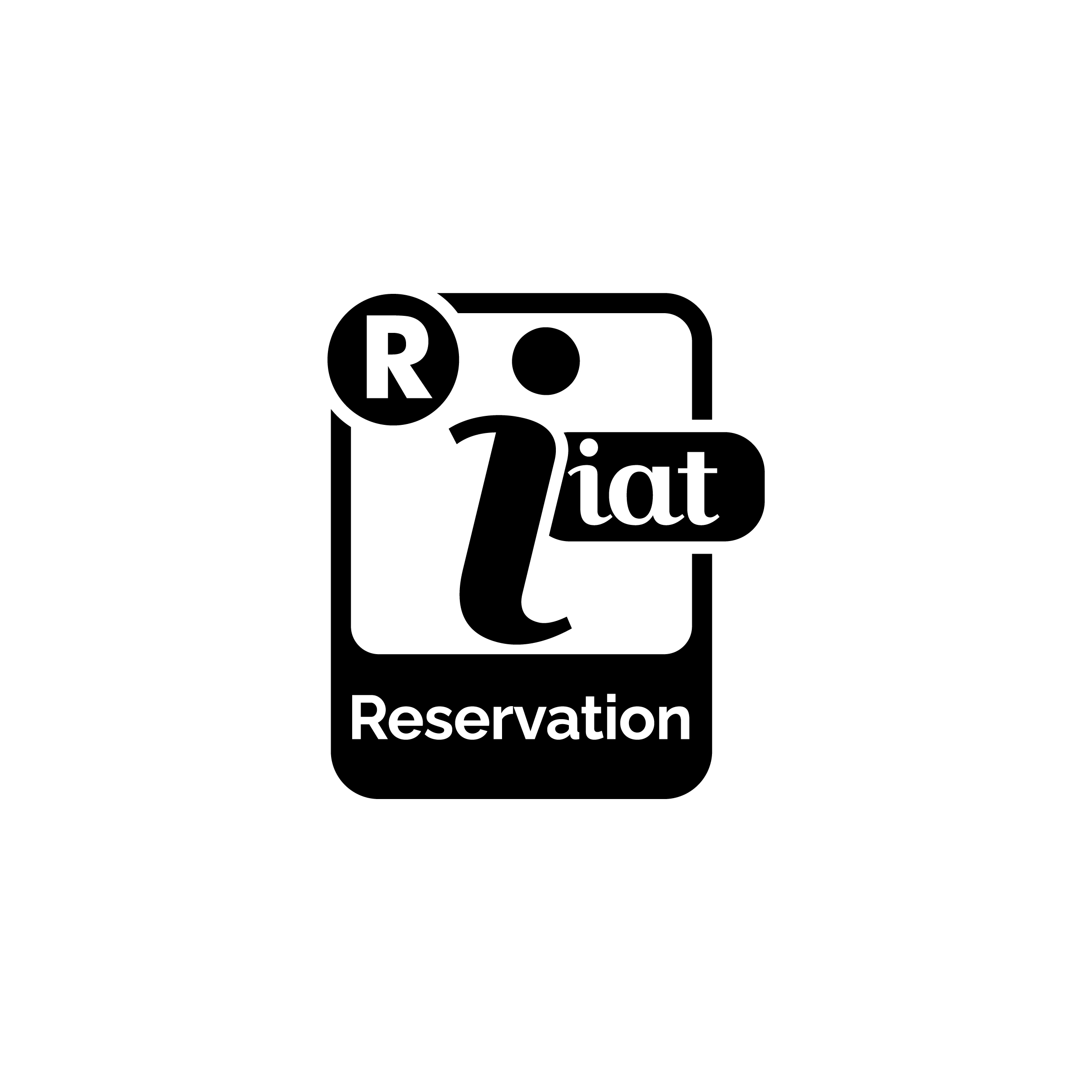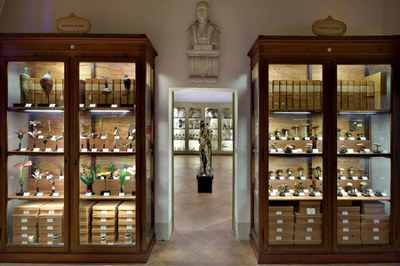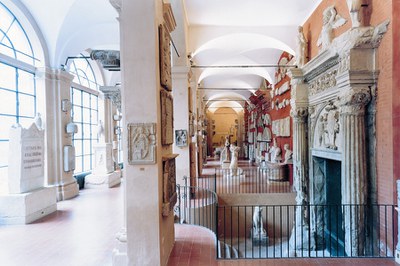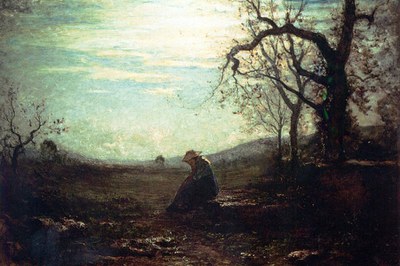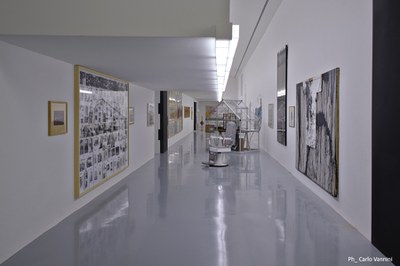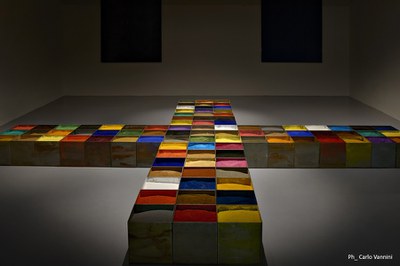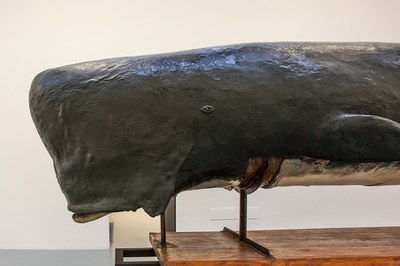Museums Palace
Address and details
Via Spallanzani, 1 - 42121 Reggio nell'Emilia 0039 0522 456816 - Museums Palace
0039 0522 456477 - Offices
![]() musei@comune.re.it
musei@comune.re.it Museum Palace
GiraReggio
Opening times
September-June
Tuesday-Thursday
10.00 a.m. - 1.00 p.m.
Friday-Sunday and holidays
10.00 a.m. - 6.00 p.m.
July-August
Tuesday-Sunday
10.00 AM - 1 PM
Monday closed
Prices
Free entrance
How to get there
Reggio nell'Emilia - Town centre
The museum overlooks Piazza Martiri del 7 Luglio and is located in front of the Valli Municipal Theatre.
Historical notes
The history of the Museums Palace begins eight centuries ago, exactly in 1256 when the Franciscans, by concession of the bishop Guglielmo Fogliani, settled in the church of San Luca and the adjoining imperial palace, in use as a bishopric starting from 1195. The transformation from palace to convent will take place a few decades later. Over the centuries the convent took shape, first developing on two floors and around a large porticoed cloister, then acquiring a large space used as a vegetable garden and surrounded by a wall. The aspect with which we know it now is a great makeover in the early decades of the XVIII century. During the Napoleonic suppressions, The Museums Palace ceases to be a convent and turns into a barracks and stable for horses, therefore in the seat of educational institutions.
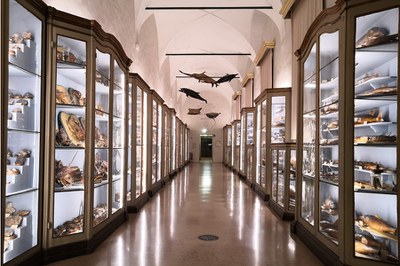
After the Restoration, the building housed the Royal Boarding School or Legal College on the first floor and the Royal High School of Chemistry and Physics on the ground floor. Precisely the presence of scientific educational institutes led to the decision, in 1830, to set up the private collection of Lazzaro Spallanzani, purchased by the Municipality in 1799. In 1862 the Reggio Don Gaetano Chierici founded the Cabinet of Antiquities country, from 1870 Museum of Homeland History, divided into large collections that favor the collection and conservation of material of local interest, but placing them within the framework of the national cultural tradition. The Museo Chierici di Paletnologia exhibits local prehistory and protohistory materials collected by Chierici himself, accompanied and compared with objects of the same period, but of different geographical origin, especially Italian. The collection reflects the methods of the new palethnological discipline that Chierici himself was defining.
The Marbles Gallery, established and open to the public in 1875, then restored and enlarged in 1991, houses stone finds and Roman epigraphs, mostly funerary, remains of architectural decorations, epigraphs and sculptures from the Middle Ages to the 18th century. Roman architectural marbles are also displayed outdoors in the adjacent Cloister. The Atrium of the Museums preserves, in addition to mosaics with geometric motifs from the Roman age, large mosaic fragments of the floor decorations, dating back to the XII-XIII century, of some churches in Reggio: Cathedral, San Prospero, San Giacomo and San Tommaso. The XIX-century collections are completed with the naturalistic collections of zoology (Antonio Vallisneri room), anatomy (Paolo Assaliniroom) and botany. They are flanked by the collections of Ethnography (Giambattista Venturi room), rearranged in 1999 with the integration of a nucleus of objects acquired by the Museum of Antiquity of Parma.
Ideal extension and completion of the Chierici Collection, it is the room dedicated to the Roman Reggio (1996-1998), in the context of the new archaeological collections, including numismatic and epigraphic collections, sculptures, mosaics, fragments of architecture, ceramics, goldsmith's art and minor arts, from the Roman foundation of the city to the barbarian age. In May 2015, the room was renovated with a permanent virtual museum: Regium @ Lepidi-Project 2200, with a totally innovative concept. In fact, it is dedicated to a not only virtual, but also interactive reconstruction of the Roman city, through the use of different equipment. In the naturalistic field, the collections dedicated to Geology (1989), Fauna del reggiano (1992) and the display of the remains of the Valentina whale (2001), a 3.5 million-year-old fossil cetacean found on the hills, were added to the XIX-century collections from the Secchia Valley.
On the upper floor of the building, the Prehistory and Protohistory Collection (1992) displays the archaeological collections after the Chierici order, presenting an exhaustive overview of the most ancient civilizations that inhabited our territory, through artifacts found from the most recent excavations and findings.
The Antonio Fontanesi Gallery, established in 1902 and reordered, enlarged and enriched several times, documents the artistic culture in Reggio from the XIV to the XX century. In the collection, the sections dedicated to the deposits of the works of art by Bipop-Carire, the Art Institute of the Artistic Lyceum Gaetano Chierici, the room dedicated to paintings, sculptures, drawings and engravings by Antonio Ligabue, and the room dedicated to Marco Gerra.
The recent history of the Museums Palace begins in 2005: the project to rethink and renovate the museum is entrusted to the great architect Italo Rota. The return to the town of the top floor of the building, unusable for several years, is the main novelty introduced by Rota's project, which intends to propose a new idea, a new museum project, which compares and dialogues with the contemporary. The architect has reconstructed a red thread that binds and connects the old with the new, the plan of the historical collections, first of all the Spallanzani Collection, with the plan of the Fontanesi Gallery and of the archaeological collections up to the third and last floor where the museum is it opens up to the complexity and contamination of contemporaneity. The comparison is with the generation of the new contemporary museums and with the territorial civic museums that offer themselves as an individual and collective opportunity in which the architecture and materials of the museum are transformed together into a museum and simultaneously become a source of experience and a means of knowledge.
On the first floor, the entrance hall has been completely renovated through a library, ticket office and studio. In all three levels of the building, a unique Pièce was designed: the precious and very rare Gold Cup dating back to the Bronze Age (about 3,700 years ago), found in Montecchio Emilia; the Venus of Chiozza, classifiable among the most ancient Paleolithic idols; the contemporary works La monta solar, sculpture in brass and ceramic from 1969-79 by Fausto Melotti; Cross of light, a work of particular spiritual intensity by Claudio Parmiggiani. They are unique pieces, masterpieces that also have a special attractive function and invite the viewer to linger and reflect.
On the top floor, Laboratory spaces invite the public to participate actively and critically in relation to the contents of the visit and encourage their creativity. In continuity with these spaces, the Agora, a place of exchange and discussion, to renew the dialectic between doing and being, between work and the word, between creativity and exchange, comparison, participation. It is in particular with the idea of the new Long Sleeve, space of the temporary museum, which occupies the whole large nave on the top floor, to highlight the message linked to contemporaneity starting from the first installation For inspiration only, curated directly by Italo Rota. In the Long Sleeve, the historic Sperm Whale has found a new location and more adequate conditions of visibility, an object particularly important for the memory of the town and one of the typical symbols of the Museum.


